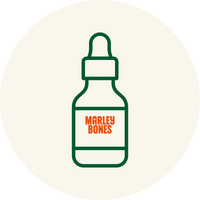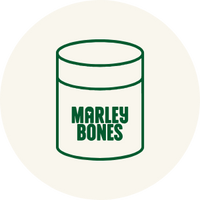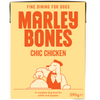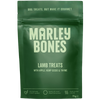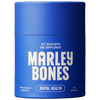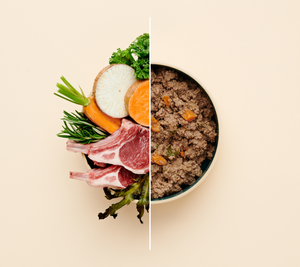The Facts on Fibre in Dog Food: What Every Owner Should Know
How many times did our parents stress the importance of eating vegetables? As it turns out, this advice applies just as much to our dogs. The fibre found in fruits and vegetables performs vital functions for intestinal health and overall wellbeing—and should never be overlooked in a dog’s daily nutrition.
This article was written by Dr. Davide Stefanutti, DVM, PhD, to offer a clear, evidence-based understanding of the role fibre plays in your dog’s nutrition. Whether you're feeding a fresh diet or supplementing as needed, fibre is a quiet but powerful ally in your dog’s wellbeing.
What Is Fibre and Why Does It Matter?
Fibre is a type of carbohydrate, but not all carbohydrates are created equal. In dog nutrition, carbohydrates fall into two broad categories:
- Non-structural carbohydrates are found inside plant cells as simple sugars (like glucose, fructose, and lactose) or more complex molecules (like oligosaccharides and starch). These are digested and absorbed in the intestines as a key energy source.
- Structural carbohydrates, more commonly referred to as fibre, include cellulose, pectin, lignin, and prebiotics like FOS (fructo-oligosaccharides) and MOS (mannan-oligosaccharides). These form the walls of plants, providing rigidity. Unlike non-structural carbs, fibre cannot be digested by dogs but plays a critical role in gut health via the microbiota.
Fibre and the Gut Microbiota
When structural carbohydrates reach the large intestine undigested, they encounter the intestinal microbiota—a community of beneficial bacteria, fungi, and protozoa essential to a dog’s digestive and immune health. These microbes ferment the fibre, producing short-chain fatty acids like acetic, propionic, and butyric acid.
These by-products are absorbed by the intestinal cells and used as fuel, directly supporting intestinal cell replication and repair. In this way, fibre actively helps regulate stool consistency, reduce both diarrhoea and constipation, and promote healthy anal gland function by increasing stool bulk.
In parallel, these same short-chain fatty acids nourish immune cells in the intestinal lining, keeping your dog’s immune system alert and responsive to pathogenic bacteria and viruses.

The Two Types of Fibre: Soluble and Insoluble
To fully understand fibre’s benefits, it’s important to distinguish between soluble and insoluble fibres. Each plays a unique and complementary role in digestive health.
Soluble Fibre
Soluble fibres include pectin, FOS, and MOS.
- Pectin is especially abundant in apples and citrus pith.
- FOS are naturally present in artichokes, asparagus, legumes, and bananas.
- MOS are derived from yeast cell walls.
These fibres dissolve in water and form a gel-like consistency in the stomach, offering several benefits:
- Satiety: By expanding in the stomach, soluble fibre can make dogs feel fuller for longer—particularly helpful in managing overweight or obese pets.
- Blood sugar regulation: Soluble fibres slow gastric emptying, resulting in more gradual nutrient absorption. This helps maintain stable blood sugar levels, especially beneficial for diabetic dogs.
- Prebiotic action: FOS and MOS feed beneficial gut bacteria, reinforcing microbiome balance and protecting intestinal health.
Insoluble Fibre
Insoluble fibre, primarily cellulose, is more resistant to digestion and fermentation in dogs. While herbivores have gut flora specialised in breaking down cellulose, dogs do not. However, insoluble fibre still offers an important mechanical function in the digestive tract.
Sources like beet pulp act as bulk agents, pressing against the intestinal walls to stimulate healthy bowel movements. This makes insoluble fibre especially useful for relieving constipation or improving sluggish digestion.
Daily Fibre For Dogs: What You Should Know
Feeding your dog the right amount of both soluble and insoluble fibre can help maintain digestive balance, encourage regular bowel movements, support immune health, and even regulate appetite and blood sugar.
Most high-quality fresh dog foods already contain an appropriate baseline level of fibre, especially those formulated for gut health. However, in some cases—like chronic diarrhoea, constipation, or obesity—additional fibre supplementation may be recommended.

The Final Woof
Fibre isn’t just filler—it’s functional. By supporting digestion, microbial balance, immune defence, and stool quality, fibre plays a central role in canine health. Soluble and insoluble fibres work together to keep your dog’s digestive system running smoothly, and both deserve a place in a well-rounded, vet-recommended diet.



